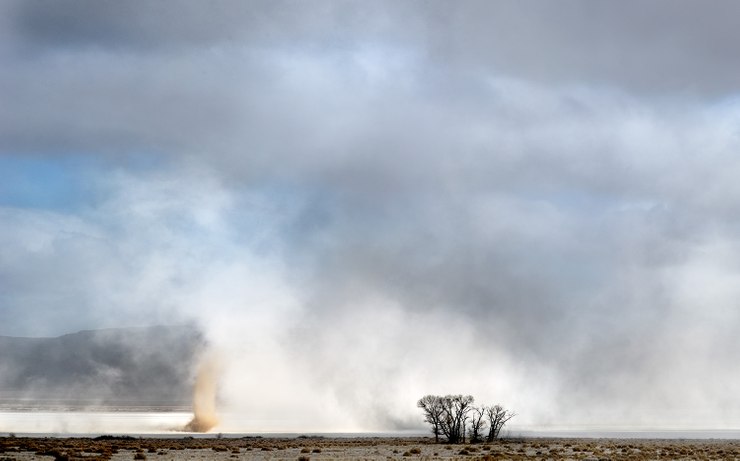The Alvord Desert is a 12-by-7-mile alkali flat in the rain shadow of Oregon's Steens Mountain. Usually, the air above this dry lakebed is still. So still, when lying on its flat surface, one can hear booming sounds believed to be generated by seismic activity along fault lines beneath the desert floor.
During the last ice age, the much larger Lake Alvord extended 100 miles from southeastern Oregon into northern Nevada. Overflowing from glacially fed streams, the lake burst through its terminal moraine, sending floodwaters east into Idaho's Snake River. Over several millennia, the climate grew warmer and drier, and the glaciers melted away, leaving a flat basin filled with mud and sand. Today, what remains is an open expanse of cracked clay. Rainfall is scarce, though natural hot springs along its perimeter water wild horses, and its seeps flow into the desert's edge where nesting birds reside.
In the winter, windstorms raise clouds of silt and salt-laden dust that race across the lakebed. Convective vortices accompany these squalls known as 'dust devils'; rust-colored columns rising to a hundred feet. Whirlwinds erupt aside the lake's old shoreline when there is a heat differential between the playa's baked surface and the cooler air along its grassy edge. These funnels inhale the heated air, rapidly spinning and lifting as the wind's direction carries them. In this photograph, the dust devil's scale renders the nearby grove of fully-grown cottonwood trees minuscule by comparison.
Location research and commentary by James Baker.

